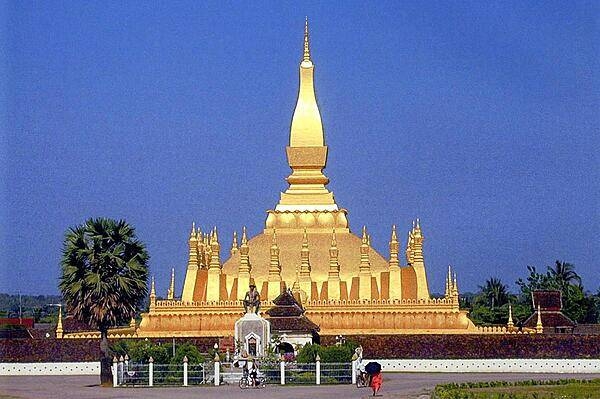Laos
Photos
8 Photos
Filter Categories
All
Filters
Located at a central crossroads in the capital city of Vientiane, Patouxai means "victory gate" in the Lao language. Built in 1962 to honor those who died in previous wars, many locals refer to it as Anousavali, meaning simply "the monument."
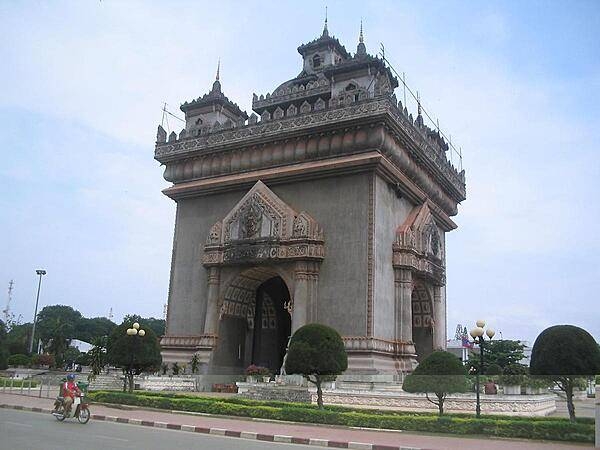
Nagas (serpent deities) adorn the staircase on the west side of Phou Si in the center of Louangphrabang, the former royal capital of Laos.

The Tham Ting cave is located about 25 km (16 mi) upriver from Louangphrabang and contains thousands of Buddha figures.
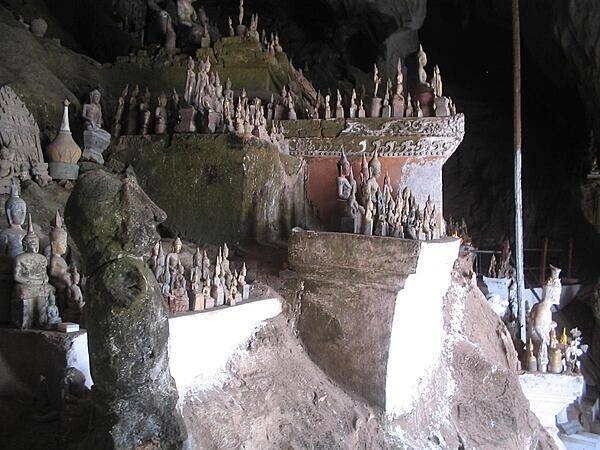
A stupa is a mound-like structure containing Buddhist relics. Located around the corner from the US Embassy in Vientiane, That Dam ("the black stupa") is one of the oldest Buddhist monuments in Vientiane. Legend holds that a seven-headed dragon lives underneath the stupa and protects the city.
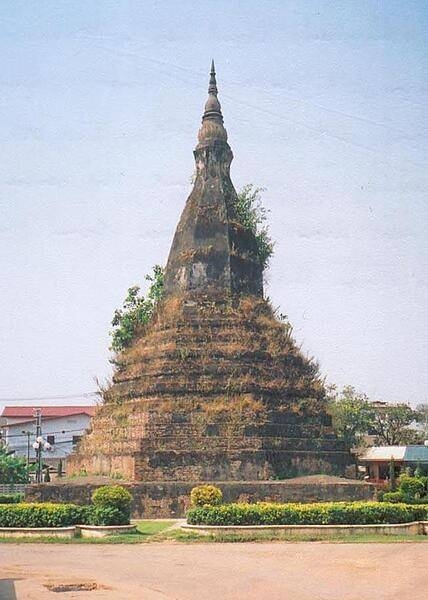
Pha That Luang, the Great Stupa in Vientiane, is considered a national symbol of Laos. It was built in the 16th century on the ruins of a 13th century Khmer temple, which in turn was built on the ruins of a 3rd century Indian temple built by Buddhist missionaries. The stupa is said to contain a relic of the Buddha.
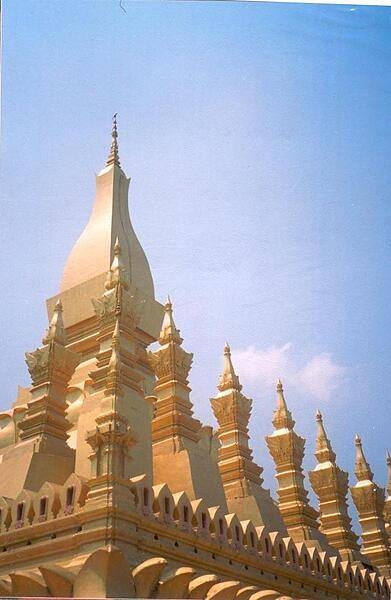
Wat Sisaket is the oldest temple in Vientiane and the only one to survive the sacking of the city by the Thais in 1827. Over 2,000 silver and ceramic Buddha images are housed in these alcoves of the cloister wall.
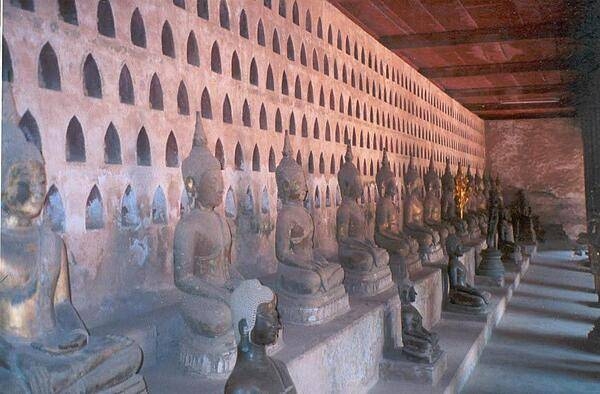
Wat Xieng Thong is one of the oldest temples in the former royal capital Louangphrabang.
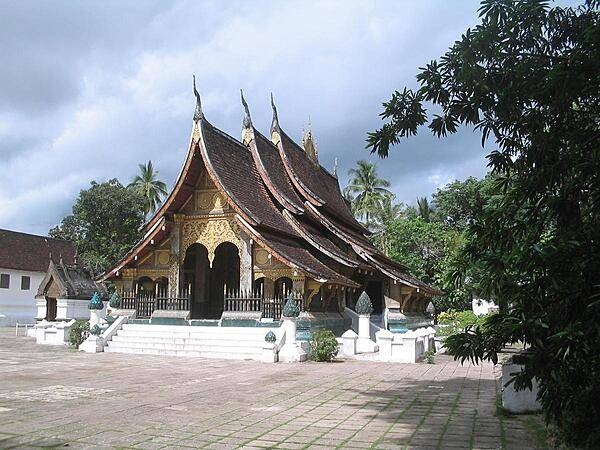
Pha That Luang, the Great Stupa in Vientiane, is considered to be the most important monument in Laos and a national symbol. Rebuilt in the 16th century, the stupa is said to contain a relic (believed to be the breastbone) of the Buddha.
